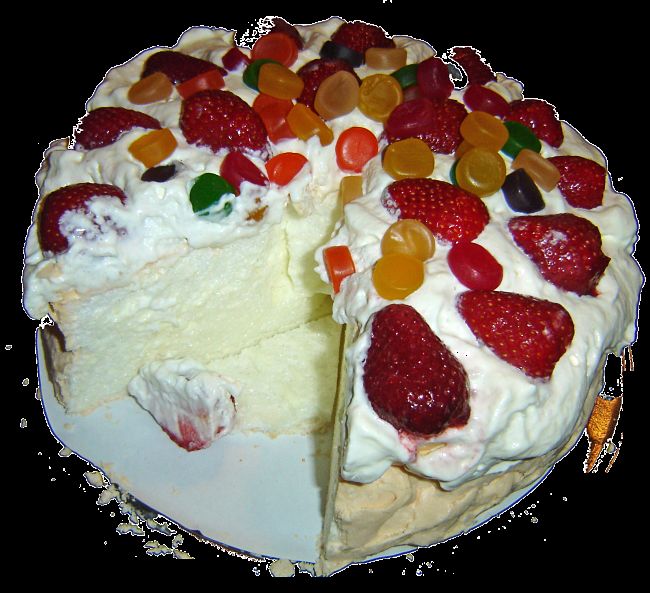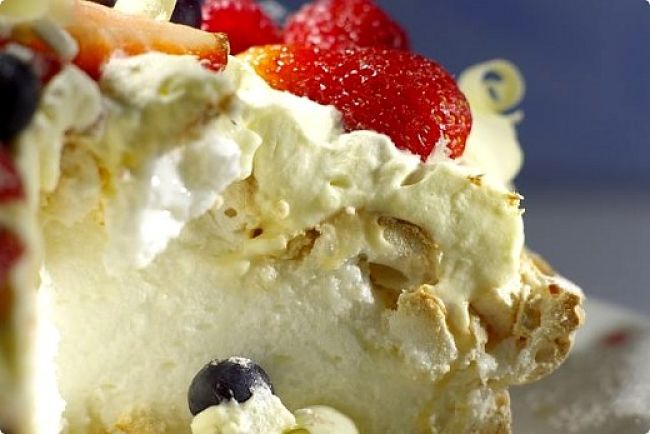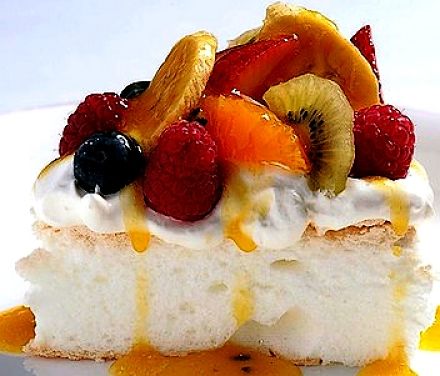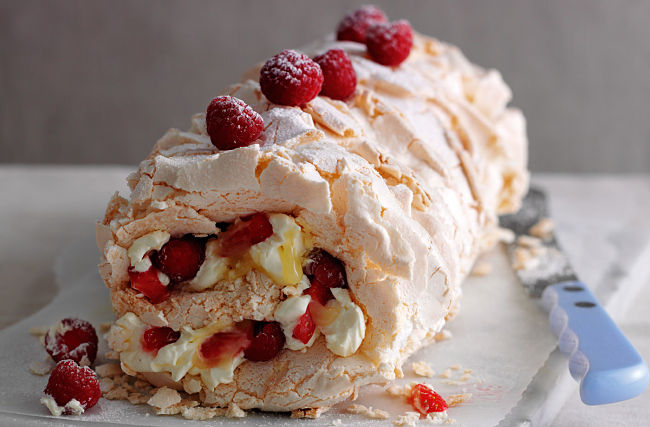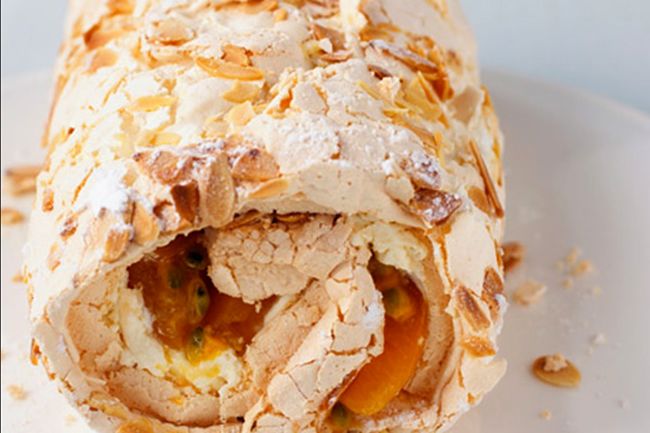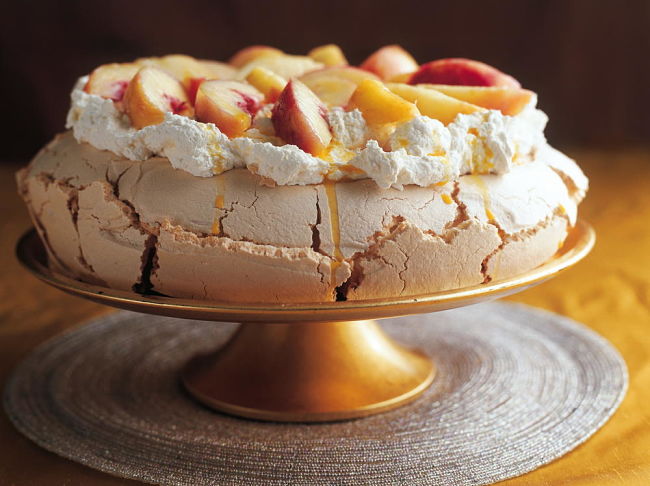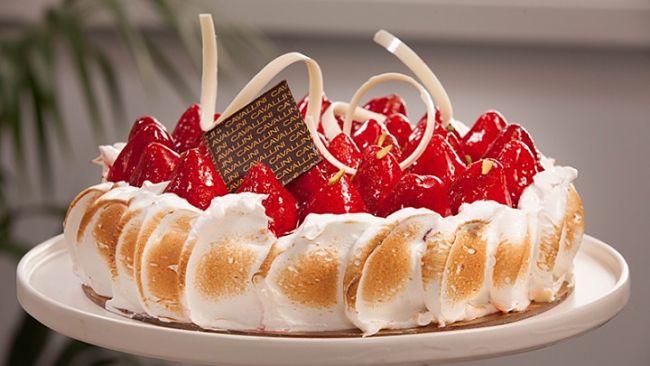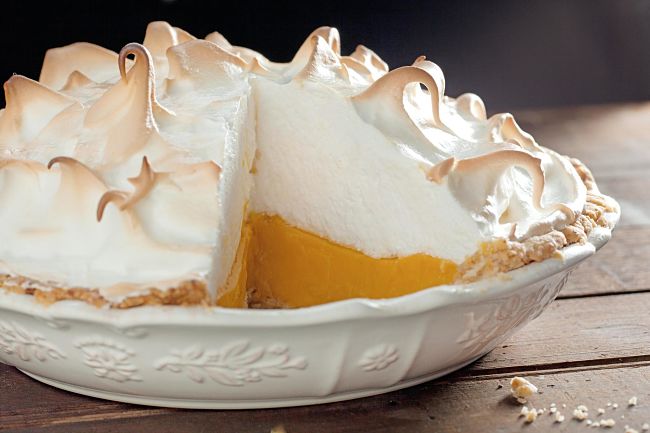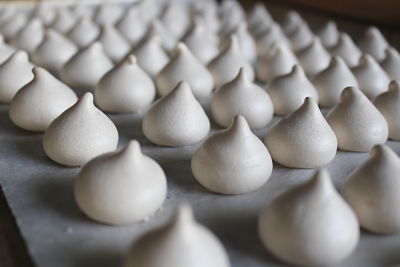Perfect Meringues Recipes and Tips to Make Pavlova Simply and Easily
Pavlova is a classic meringue dessert with a crisp crust and a light, soft interior, that is topped with fresh fruit, cream and custard. It is made by whisking egg whites (usually with a little salt) until very stiff.
Caster sugar, cornflour, white vinegar, and vanilla essence and gently folded in. The mixture is then added to a baking tray and cooked slowly at low temperature.
Sound easy doesn't it? But the idea of making meringues and pavlovas at home strikes fear and terror into many cooks.
But, don't despair this article will show to mix and bake perfect pavlovas and meringues every time.
Just follow the simple guide and recipe and use the set of secret tips for making fabulous pavlovas at home, from scratch.
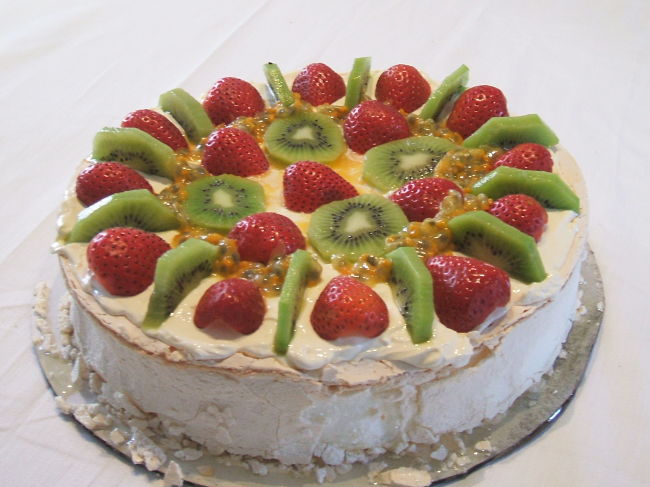
The pavlova meringue dessert was crafted and named in honour of the famous Russian ballet dancer Anna Pavlova, who toured New Zealand and Australia in the 1920s. There has been seemingly endless, lively debate about whether pavlova originated in Australia or New Zealand. However it has become a very popular dessert dish in both countries and throughout the world. It is a wonderful dessert that has unreasonably created fear in the hearts of nervous cooks who don't cook it as often as they should.
Everybody in Australia loves a great 'Pav' topped with fresh cream and strawberries, bananas, blueberries, kiwi fruit slices and passion fruit. They are served on special occasions particularly for weddings and birthdays, but they are so good and easy to make, they should be enjoyed a lot more often.
Main Symptoms and Reasons Why Pavlovas Fail and Become Disaster Puddings
Like everything else it takes practice to get it right. You can learn from your mistakes. This article did not promise perfect pavlovas the first time you make them.
- Unsightly sugary droplets form on meringue surface. These are generally caused by overcooking, and the solution is to simply reduce the cooking time.
- Any sign of liquid and uncooked egg leaking from the base of the meringue is a signal that the meringue has not been cooked enough.
- The egg whites won't beat properly or take too long to stiffen. This is generally cause by cold eggs or some minor contaminant in the bowl or whisk. The mixing bowl and whisk need to be scrupulously clean and free of any trace of grease.
- The meringues does not cook properly with a crisp outer crust. This can be traced to eggs that are not as fresh as possible, yolk contaminating the whites and eggs not brought to room temperature before mixing. The main reasons the eggs should be as fresh as possible are:
- The beaten egg whites from very fresh eggs hold their shape better and are more stable, than whites made from less fresh eggs.
- Fresher eggs can be separated more easily and reliably than older eggs. This helps to ensure there are no traces of egg yolk in the whites.
- Oddly, while it is important to use egg whites at room temperature, it is easier to separate the eggs when they are cold. So if in doubt about the separation process, do it with cold eggs, and let the separated whites come to room temperature before using them (about 20-30 minutes).
- Some of the problems with beating the eggs can be traced to the sugar. The best meringues are made from superfine sugar (very fine grain caster sugar). This sugar dissolves faster in the egg whites and works better. Another trick with the sugar is not to add it at the beginning. The sugar granules get in the way of the proteins that need to bond together to stiffen the mixture. So add the sugar after you have started to whisk the eggs. The sugar is important for another reason. The sugar grains bind to the water molecules and this help them from being released as water vapor during the cooking of the meringue. This also assists in keeping the foam mixture stable until the meringue stiffens.
- Adding some vinegar (or other acid such as lemon juices) helps to stop the foam from becoming over-beaten, which can cause loss of water and collapse during cooking.
- Pavlovas can be made several days in advance. This reduces the stress of having to do it at the last moment on the big day. Just store the cooked meringue in an airtight container in a cool dry place (not in the refrigerator).
Preparations for Making a Pavlova
Ensure that the mixing bowl is absolutely clean. Remove any oil by lightly washing the bowl, whisk and spoons with vinegar and rinse well. Make sure that everything you need is ready on the bench. Ensure the eggs are as fresh as possible, and are at room temperature. You must be very meticulous not to get even a trace of yolk into the separated whites. Always do the eggs one a time, so that if you break any of the yolks you won't contaminate all of the separated whites. You can make a custard with the yolks to add as topping with fresh fruit.
Ingredients
1 tablespoon cornflour, well sifted
1/2 teaspoon white vinegar
250g (9 oz) pure icing sugar or very fine castor sugar, well sifted
4 egg whites (5 if you are using small eggs)
Instructions
Preheat the oven to a very low setting, 200 degrees C (390 degrees F). Place a small amount of melted butter or vegetable oil on a baking tray and cover it with baking paper. The butter or oil will stop the paper from sliding around. Use a good quality electric mixer (stand or hand-held), or use a hand whisk (much harder to do). Beat the egg whites using a medium-speed setting, until soft peaks start to form.
Add the sugar in one go, and beat the egg white mixture for about 60-90 seconds using a high full speed. Keep the mixer running while you to add the sugar. The mixing has to be a continuous process, designed to trap as much air as possible in the egg whites. With the addition of the sugar the mixture will change its texture and appearance. It will go from loose, relatively soft peaks to a firmer more glossy mixture.
Run the mixture on a high setting until the sugar is all dissolved and the mixture starts to thicken. It needs to get to the so-called ribbon stage. When you remove a spoonful of the meringue mixture and pour it back into the bowl, the added meringue sits on the surface like a ribbon.
Slow the mixer speed to medium, add the vinegar and very briefly mix it in (allow 3 beater rotations only). Remove the bowl from the mixer. Gently sprinkle the cornflour over the meringue mixture. Using a very clean, dry spatula, gently fold in the cornflour, but allow no more than six folds.
Spoon the meringue mixture onto the baking tray lined with baking paper and gently shape it into what you want. Don't interfere with the mixture too much, and shape it quickly. Place the baking tray to the middle shelf in the oven. Then immediately lower oven temperature setting to 120 degrees C (250 degrees F). Do not use the fan as you want the meringue to cook very slowly in a still oven. Cook the pavlova for about 80-90 minutes. Ideally it will be completely cooked before it starts to turning brown (white is best). Don't worry if you see a small amount of sugar syrup drain from the bottom. The outer layer should be crusty and firm while the inside should be soft and have a marshmallow consistency.
Remove the cooked meringue from the oven. Let cool to room temperature and top with mascarpone, cream or custard (see recipe below). Add your favorite fresh fruit topping such as sliced kiwi fruit, peach sections, strawberries, blueberries or passion fruit.
Recipe for Pavlova Passion Fruit Custard Topping
- juice of 2 lemons
- 4 passion fruit
- 60g (2 oz) butter, cut into small cubes
- 4 egg yolks
- 60g (2 oz) cornflour, sifted
- zest of 2 lemons, and juice of two lemons
- 145g (5 oz) sugar
- 450ml (15 fl oz) whole milk
Simmer the milk, lemon zest and sugar over medium heat to dissolve the sugar. Combine the cornflour with water to make a thin paste, and pour this into the milk, and stir until it thickens. Add the eggs yolks, whisk to combine and simmer gently, without boiling. Remove the custard mixture that has formed a nice thick and creamy sauce nice and from the stove. Add the butter and whisk once again. Add the lemon juice and passion fruit. When cool, spoon the custard over the pavlova and serve with fresh fruit.
Memorable Meringues (crisp versions)
- 4 egg whites, at room temperature
- food coloring
- 220g (1 cup) caster sugar
- 2 teaspoons cornflour, sifted
- 1 teaspoon white vinegar
- colored sprinkles, to decorate
Preheat the oven to 100 degrees C (210 degrees F). Line two baking trays with baking paper. Transfer the egg whites at room temperature into a large very clean and dry bowl. Using electric mixer, whisk the egg whites until soft peaks form. Slowly add the sugar and mix until all the sugar dissolves. Beat the mixture for about two minutes, until the mixture is glossy and thick. All the sugar should be dissolved. Long, stiff trailing peak should form when the beaters are lifted from the mixture.
Add the vinegar and cornflour and mix until just combined. Divide the meringue mixture into several bowls and add the food coloring. Transfer one colored mixture into a clean piping bag and pipe the meringue onto the baking tray. Use the other color mixtures to make the remaining meringue.
Sprinkle with some of the sprinkles and bake in the preheated low temperature oven for about 2 1/2 hours. The meringues should be crisp and sound hollow when tapped on bottom. Turn off the oven and leave the meringues inside for 2-3 hours to cool slowly and get very crisp.
